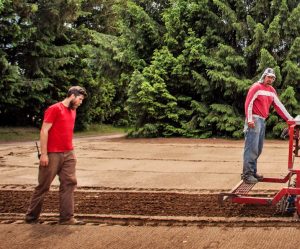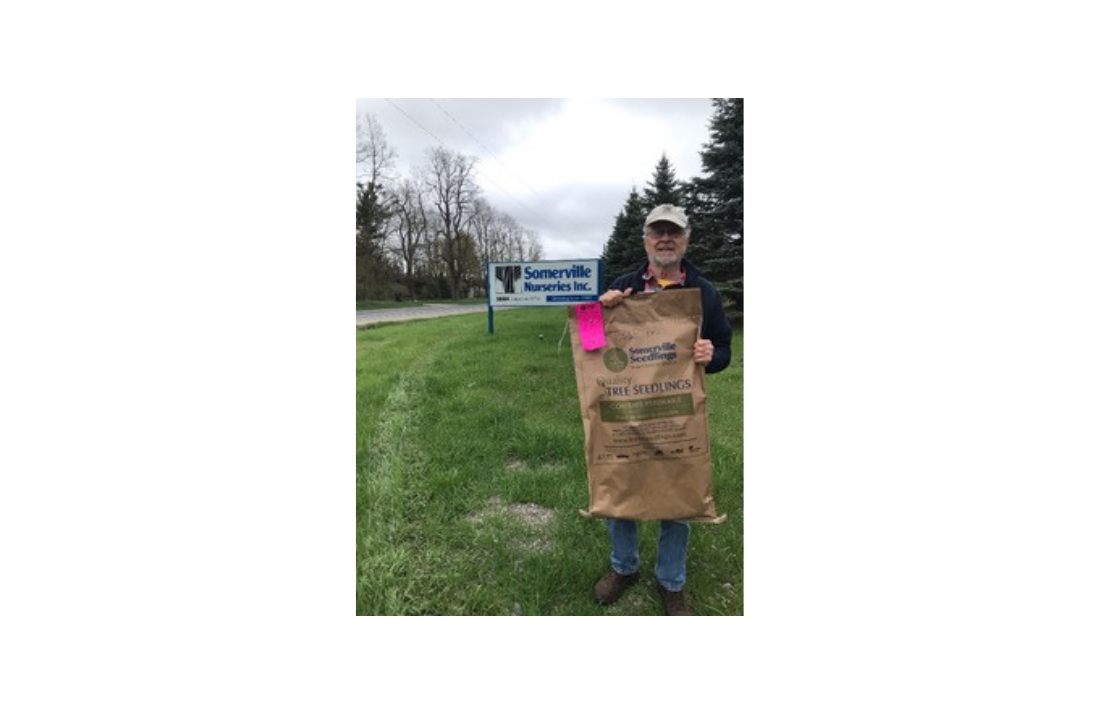Somerville Seedlings — Growing forests for the future
– Gord Ball, for Sustainable Orillia
Every year, Somerville Seedlings tree farm grows about 3 million trees to sell. At any given time they have about 23 million individual trees on their property. Brent Forbes’ job is to grow them. “I’ve got a lot of trees to take care of,” he says. “I went to school to understand what was going on in the natural world. I’m fascinated to see trees planted 10-20 years ago, and to know that if we continue, they will be creating valuable spaces in the future.” He has some help – a staff of anywhere from 20 to 40 people join him throughout the season.
Brent has been doing this at Somerville for eight seasons. With a Masters degree in Forestry, he has worked with trees all over Ontario. He knows trees pretty well.
 Somerville got its start in tree business in the 1950s as a lumber and landholding company and started growing Christmas trees on some of the lower quality land. They grow them still, on 2000-3000 acres in Simcoe County. Following the closure of the provincial nursery system in the mid-90s, however, they added a large landscape division. That’s when they started their seedling division, partnering now with Forest Ontario and the “50 million trees” campaign.
Somerville got its start in tree business in the 1950s as a lumber and landholding company and started growing Christmas trees on some of the lower quality land. They grow them still, on 2000-3000 acres in Simcoe County. Following the closure of the provincial nursery system in the mid-90s, however, they added a large landscape division. That’s when they started their seedling division, partnering now with Forest Ontario and the “50 million trees” campaign.
Who buys all these trees? Brent says Somerville has a varied customer base, from conservation authorities (their biggest customers) and private “planting agents” (private companies and forest consultants) to small-scale growers, Christmas tree farms and private landowners who buy seedlings in bundles of ten.
Asked what trees would suit Orillia’s urban backyards, Brent suggests taking cues from what trees are found there already. Local species are favoured – native maples tolerate a wide variety of sites. Red oak is fast-growing and hardy, with an attractive colour in the fall. The mighty white pine is a big seller. It is common and has no serious issues. Native tamarack is a good choice.
Although spring is a popular time for starting seedlings (virtually all of Somerville’s business happens in April and May), there’s no reason not to plant in the fall. “In spring,” says Brent, “trees are dormant with a longer shelf life in storage, and weather conditions are good.” But fall is also a good option. Species selection is a little more limited then, meaning a narrower range of seedling choices.
Balled and burlapped trees are older and more expensive, and more difficult to move. Seedlings are easier to transport and more affordable. “We tell people to get seedlings into the ground as quickly as they can,” says Brent, “within 3-4 days if they’re sealed in the bag and kept cool and dark.”
Brent knows that tree-planting is critical, especially now during climate change, for the many benefits that trees give us – especially carbon sequestration. Ontario has had an impressive record with tree-planting, heading towards 2 billion trees. “Small landowners can play an important role in that,” says Brent. “It motivates me to see trees going out the door and to know that they’re going into the hands of people who are creating forests of the future. The timeline of those forests is in the hundreds of years. Forests are being managed for more diversity now.”
He sees large swaths of Simcoe and Dufferin County that were once sand plains and are now productive forests with rich wildlife and diversity. “It makes you feel good to see all the benefits trees are giving us.”
“I encourage people, if they have some space, to go to a local nursery and find something that would be great for their site and put it in,” says Brent. “It’s fun to plant something that will be there for a long time.”

